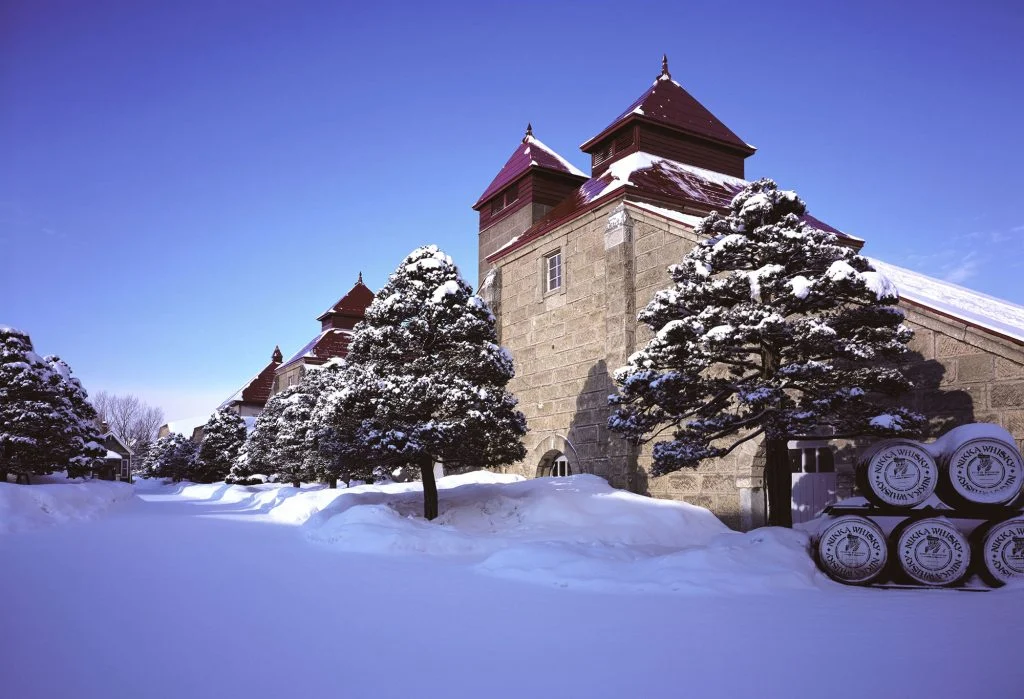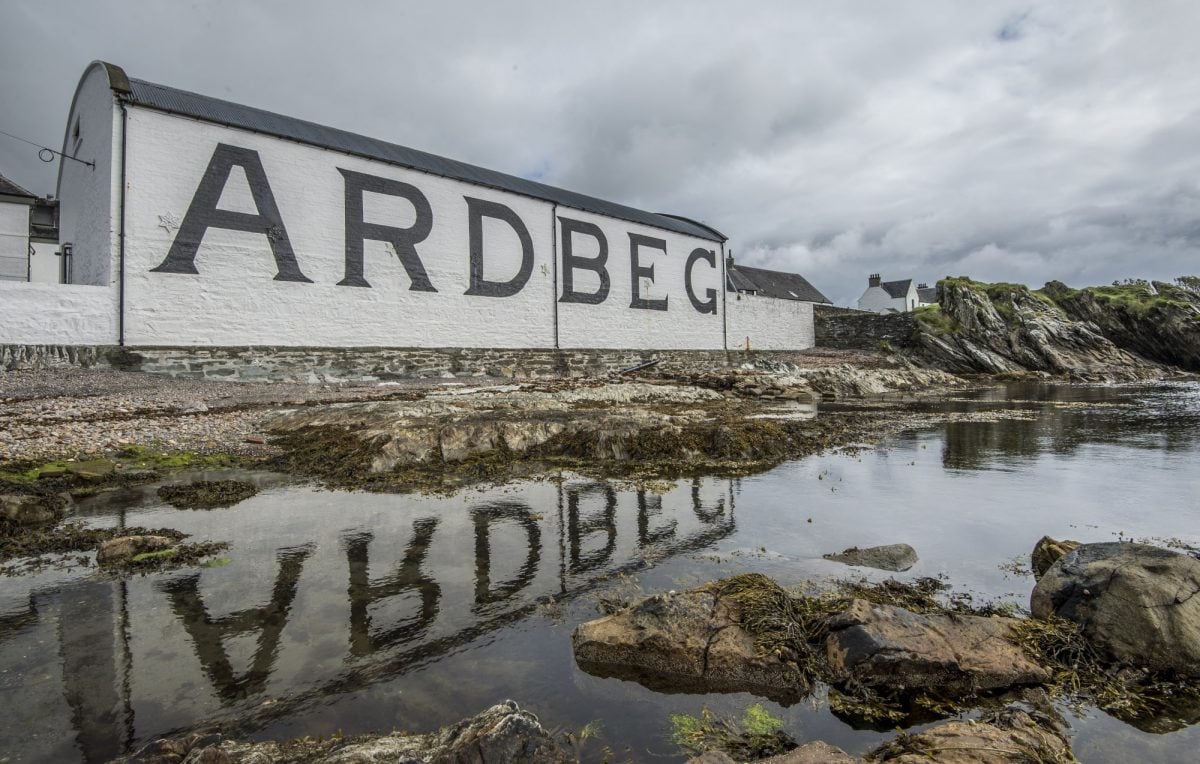Is Japanese whisky better than Scotch?
“Is Japanese whisky better than Scotch whisky?” This is one of life’s timeless questions, like “should the soldier in the song have stayed or gone?” and “is it pronounced scone or scone?” In my opinion, he should stay. If he stays, there will be trouble, and if he goes, there will be double. Splitting the potential trouble is clearly the best course of action. As for the pronunciation, it’s definitely “scone.” If only everything in life were so simple. However, as they say in Germany, “life is no pony farm.” Some debates will rage on forever, and this is no exception. Let’s take a closer look at the facts of the matter…

Yoichi distillery, Japanese whisky made here
The history
Scotch whisky has a long and established history. The first recorded mention of whisky-making dates back to 1496 in an old document called the Exchequer Rolls of Scotland, which documented the financial administration of the day.
The document showed that Scotch refining was already deeply rooted by that time, having learned from methods introduced by medieval monks. For centuries, it was a relatively small scale, domestic activity, made with whatever ingredients were available. This began to change in the eighteenth century with the arrival of large-scale distilling, such as Haig’s huge Kennetpans distillery, which was powered by the first steam engine in Scotland.
Highland distilling remained small scale and often illegal until the 1823 Excise Act, which saw the development of increasingly large malt whisky distilleries like Macallan and Glenlivet. Then, with the development of blending by entrepreneurs like John Walker and Arthur Bell, Scotch whisky became a global phenomenon. The great variety in region and production methods resulted in one of the world’s most diverse spirits. Scotland is typically divided into regions, each with its own characteristics and style. If that sounds a bit fussy to you, try a delicate, floral Lowland whisky like Glenkinchie, and compare it to one of the peaty, smoky malts from Islay, like Ardbeg. However, there are unusual distilleries like Bunnahabhain on Islay that produce unique whisky.
Japan, on the other hand, is a relatively new player in the game. Its history is a twentieth-century endeavor, dating back to 1918 when Masataka Taketsuru embarked on a journey to Scotland to immerse himself in the art, science, and magic of whisky-making. He did this at several distilleries, including Longmorn in Speyside and Hazelburn in Campbeltown. He returned to Japan two years later with a wealth of knowledge, Rita Cowan (his Scottish wife), and a recipe for roasted Mars bars (okay, that last one may be fictional). Then, in 1923, he collaborated with another legend of Japanese whisky – Shinjiro Torii, of Suntory fame. Together they founded the country’s most iconic whisky distillery, Yamazaki, on the outskirts of Kyoto, choosing the land for its clean water and excellent Highland-like environment. Taketsuru went on to found Nikka, which, alongside Suntory, remains one of the biggest brands in Japanese whisky today.

Ardbeg distillery on a particularly dramatic day
The characters and flavor profiles
One of the underlying battles Taketsuru and Torii confronted was the Japanese sense of taste’s inclination for lighter, less strong spirits. To satisfy this need, Japan’s refineries by and large produce malts which incline toward a gentler, more botanical style.
Obviously, this isn’t to imply that you won’t discover a few smokier, more extravagant measures. Single malts from Yoichi frequently show notes of peat, and a portion of Yamazaki’s sherried single malts can be very full-bodied and weighed down with umami.
The country’s environment likewise assumes a huge part, differing essentially from north to south, frequently bringing about a quicker development process contrasted with Scotch. Couple that with luckily unadulterated water, frequently obtained from mountain springs, and the outcome is a remarkably spotless, adjusted flavor profile. To additionally muddle things, much mass Scotch whisky is brought into Japan and is utilized numerous Japanese whisky mixes so assuming you think some Japanese whisky tastes extremely Scottish that is on the grounds that it is.
Scotch is more diligently to order because of the sheer assortment of whisky created. Every locale has its own strategies and styles, from the sweet, rich, fruity malts of Speyside, to the sleek, smoky measures of Islay. A piece of this distinction comes as peat – a customary fuel utilized in certain refineries during the kilning system, and one which bestows every one of those smoky, huge fire like flavors. You’ll likewise see a lot of variety in the utilization of containers in Scotland. Whiskey and sherry oak are the most common, yet numerous refineries explore different avenues regarding every kind of containers, from Port and wine to additional shocking models like rum. You’ll get a tad bit of that in Japan as well, obviously, however not in a similar way. However Japan has its own special kind of oak, mizunara, which adds a zesty, cherrywood hint to its whiskies.
In general, whisky is noted for its rich, refined style, while Scotch is known for its colossal, frequently more articulated spirits.
Do you know what specialists say about Japanese whisky? At one point, it was only valued in Japan, but that changed with the release of a book called The Whisky Bible in 2015. The author, Jim Murray, is a well-known critic in the industry and his book includes reviews and notes on over 4,500 whiskies.
One whisky in particular, a 2013 sherry cask single malt from Yamazaki, was named World Whisky of the Year with an almost perfect score of 97.5 out of 100. Murray described it as “close to staggering genius”. This and other awards brought about a change in consumer perception and a surge in popularity. However, this also meant that once overlooked and undervalued spirits became harder to find and more expensive.
While some value-for-money gems from Japan still exist, gone are the days when you could get a bottle of Yamazaki 18 Year Old for only 80 quid. Starting around 2015, both Scotland and Japan have received numerous awards and prizes in competitions and blind tastings. However, Japan is no longer the underdog in this industry.
Here are some of our favourite Japanese whiskies:
This is one of Japan’s best deals and is a blend of single malt and grain from the Miyagikyo and Yoichi distilleries. After blending, the whisky is married in a range of barrels including sherry and bourbon. As the name suggests, it is bottled straight from the barrel, without any dilution. The result is intense and technically rather magnificent. It won gold at the 2015 Global Spirits Challenge.
This is from Japan’s oldest distillery and is one of its earliest age statement bottlings. It was released in 1984 and has received numerous awards including gold medals from both the Global Spirits Challenge and the San Francisco World Spirits Contest. It is aged in various barrels including American, Japanese, and Spanish oak. The blend creates a remarkably balanced, complex, and refined whisky. It has a nutty, floral, spicy and humidly fruity nose with hints of grittiness and spice. The medium palate is all honey sweet, with striking citrus, tropical fruit, and a brilliantly rum-like, lively, lingering finish. It’s truly exceptional .”
So, is Japanese whisky actually better than Scotch?
We’ve not answered the question have we? We’d love to but it’s just not possible. Whisky is subjective. Some utterly adore the fragrant, floral, unique palates of a Hakushu or a Miyagikyo. Others want something big and bold, like a Laphroaig, or a heavily sherried Speyside single malt. It’s all about finding what you like…
